The Rathaus in Munich, today, and on November 9th, 1923
I have spent a total of about four years of my life in Germany. I enjoy the country and the people and I love traveling here because for me it is relaxing. I feel comfortable in Germany. It doesn’t hurt that I am reasonably fluent in German and don’t speak it with an American accent. When I have a car I enjoy driving on the Autobahn, and when i don’t, I find the mass transportation more than effective, convenient, and a great way to travel.
Likewise, I am a historian who for many years specialized in the study of the latter years of the Kaiser Reich, the German revolution and civil war, the Weimar Republic and the Nazi period. I always find visiting Munich intellectually stimulating. Munich is a very interesting and sometimes contradictory city, rich in culture, music, art, literature and scientific-technological achievements. Munich has always been a more cosmopolitan center of a very conservative Bavaria, the heart of Catholic Germany. Thus there has always been a tension in the city, between the local more religious conservatives and business leaders and the more secular and progressive inhabitants, and in the early 1920s, immigrants from Eastern Europe, especially more traditional and conservative Orthodox Jews.
This tension continues today with the large numbers of foreigners that live and work in the city. Many are Turkish guest workers and their descendants that have been in Germany almost half a century. But many are new immigrants from the Middle East and Africa, some who have embraced German life in a secular state, but many who have not and stand out in the crowd. The Muslims who retain their traditional dress stand out from others, and are somewhat reminiscent of the Eastern European Orthodox Jews, who likewise stood out as they attempted to maintain their cultural and religious identity.
The Wittelsbach dynasty, which included “Mad King Louis” who built the amazing Neuschwanstein and Linderhof castles ruled Bayern for centuries. That dynasty, with the rest of the German royalty was overthrown following the German defeat at the end of the First World War. It was replaced for about three months by what was known as the Bavarian Soviet led by Kurt Eisner, an “independent socialist.” Eisner could not hold power and resigned in February 1919. On the way to his resignation he was assassinated by a right wing extremist who held the views of the racist Thule Society. Eisner was replaced by a Majority Socialist leader who could not form a government and then by an Independent Socialist and Communist government. This government was inept and brutal, it took hostages from the elite of the city as well as conservative reactionaries and had them executed. The government in Berlin sent a force of 30,000 Weimar Government employed Freikorps troops under the command of General Ritter Von Epp, which included many Bavarians from rural areas, to defeat the Munich Soviet and restore order. Von Epp’s men crushed the Communist opposition and executed hundreds of the Communists and Independent Socialist fighter and their leaders.
The city was still rife with revolutionary and reactionary elements and in 1919 when a new political party was established. This party, the German Workers Party became the National Socialist Workers Party of Germany, or the NSDAP, better known as the Nazis. Adolf Hitler joined the party and quickly became its head and changed the name. In 1923, Bavarian was again in a state of political turmoil, this time led by Right Wing Conservatives. On November 8th Hitler saw an opportunity. He along with General Erich Ludendorff led a coup, or “putsch” against the government on the 8th and 9th of November 1923. The putsch originated at the NDSAP headquarters and Hitler led about 2000 armed members of the party to the Burgerbrau Keller beer hall where the Gustav Von Kahr, who had been appointed with dictatorial powers due to the unrest, was making a speech.
Hitler and his stormtroopers marched in and took Von Kahr and other members of the government hostage, Hitler, even aiming a pistol at Von Kahr. Once he forced Von Kahr to support him, Hitler marched back into the bier hall and declared a revolution, enjoining those present to “join in this grave eleventh hour for our German Fatherland.”
Pictures of Hitler’s troops. A young Heinrich Himmler is in the center picture carrying a Imperial German Battle Flag.
While many present at the Burgerbrau Keller were excited by his speech, the revolt did not gain momentum. In desperation Hitler ordered a march to overthrow the government. On the morning of November 9th, Hitler and Ludendorff led off a column of Stormtroopers across the bridge over the Isar River near the Deutches Museum. They continued past the Rathaus on Marienplatz, and turned north towards Odeonsplatz, near the Feldherrenhalle, Munich’s soldier’s memorial.
Artist depictions of Hitler’s clash with the Bavarian Police and him fleeing the scene (Above), and a photo following its defeat (Below).
As they approached the Feldherrenhalle, his group of nearly 2000 followers which included future Nazi Leaders Hermann Goering and Rudolf Hess were confronted by about 100 Bavarian police. The events became confused as both sides fired upon each other. The police killed about 18 Nazis in the exchange of fire, losing three of their own. The Nazis, including Hitler fled and attempted to escape Justice. Hitler was captured, arrested, and tried in court. He was sentenced to five years imprisonment, but only spent nine months in prison, enjoying many privileges not given to others. During his imprisonment, Hitler dictated his book, Mein Kampf to his Secretary, Rudolf Hess. After his seizure of power in 1933, the Burgerbraukeller and the Feldherrenhalle became Nazi shrines which after Hitler’s takeover became places where Hitler would return yearly to mark his failed putsch. The Burgerbraukeller was destroyed during the war and following the war the Nazi memorials at the Feldherrenhalle were removed.
All of these events took place in a small area of the Munich city center. Sadly most people who go to Munich are unaware of the events that occurred on those streets one hundred years ago, and many fail to realize how easily a city that know for so many cultural and scientific achievements could become the locus of evil for a man like Adolf Hitler.
While I love Munich my love is tempered by how many events which still affect us today occurred there 100 years ago. To use a German expression, that amount of time the sense of history is merely an “augenblick” or “blink of an eye”. It is hard to believe that so much has happened there and just how few people understand just how easily such events can happen again.
Since Donald Trump was elected President in 2016, Right Wing anti-government and antisemitic groups saw exponential growth as hate crimes and mass murders rose. On January 6th, 2021 Trump helped orchestrate a violent attack on Congress as it met to certify the Electoral College vote. It was very similar to the Bier Hall Putsch, except Trump was the sitting President seeking to become a dictator while Hitler was still a relatively unknown leader of a minuscule political party trying to overthrow a state government in order to overthrow the national government.
Unfortunately, the goals of Trump and Hitler were the same. While Hitler learned his lesson and used the democratic means of the Weimar Republic against it until he was appointed Chancellor by President Paul Von Hindenburg. Trump used the American system to be elected as President, but when he lost the 2020 election he attempted to use it in order to overturn the election of Joe Biden and seize power. Despite his loss, he and his cabal have continued to use all means in the lead up to the 2024 election to prepare to seize power.
That is something that makes Trump’s efforts much like those of Hitler. Like Hitler, Trump and his followers have promised to punish those that opposed him. Hitler killed hundreds of political, military, and other opponents, including many Nazis, and his closest friend, the head of the SA Brownshirts, Ernst Roehm on the “Night of the Long Knives in 1934.” Trump has promised retribution against a laundry list of his perceived enemies, including senior military officers, if he again takes power.
The Bier Hall Putsch was a prelude to much more evil. It is a precedent that we cannot ignore.
If you like this article share it by restacking on Substack or sharing via your social media outlets. If you really like my work please become a paid subscriber. Thank you.

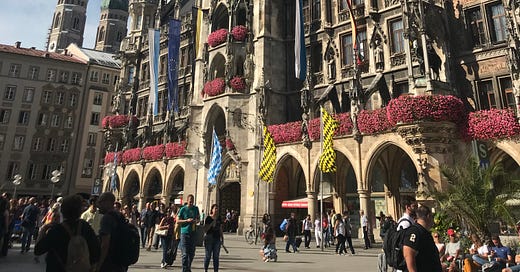




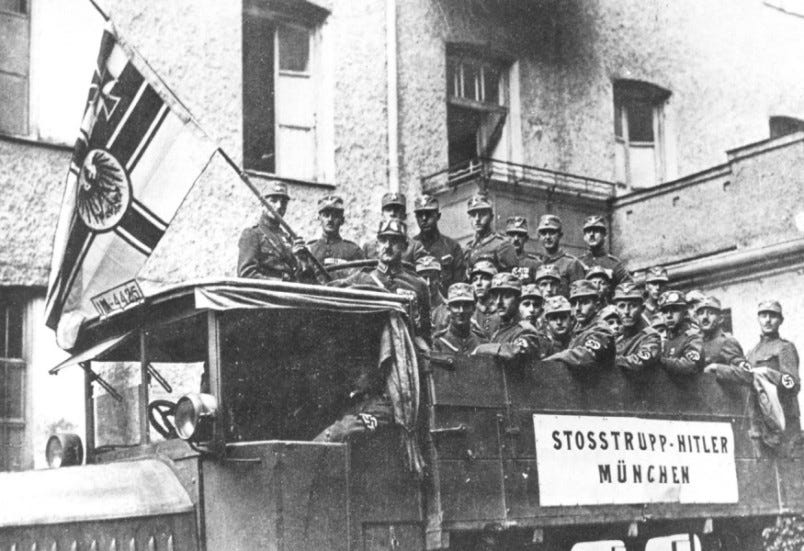
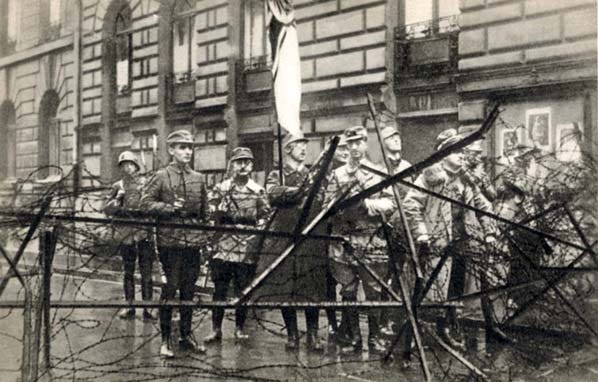
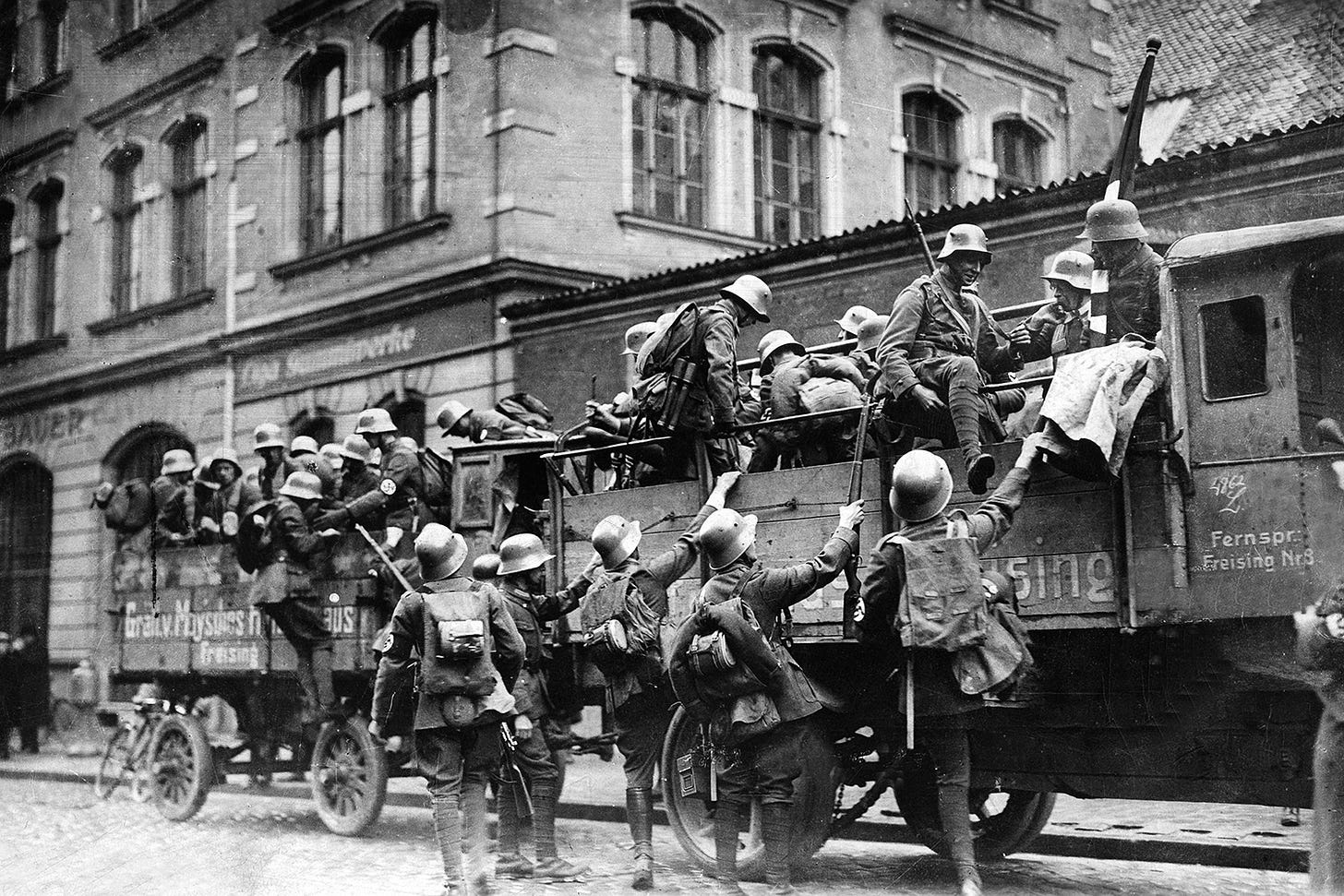




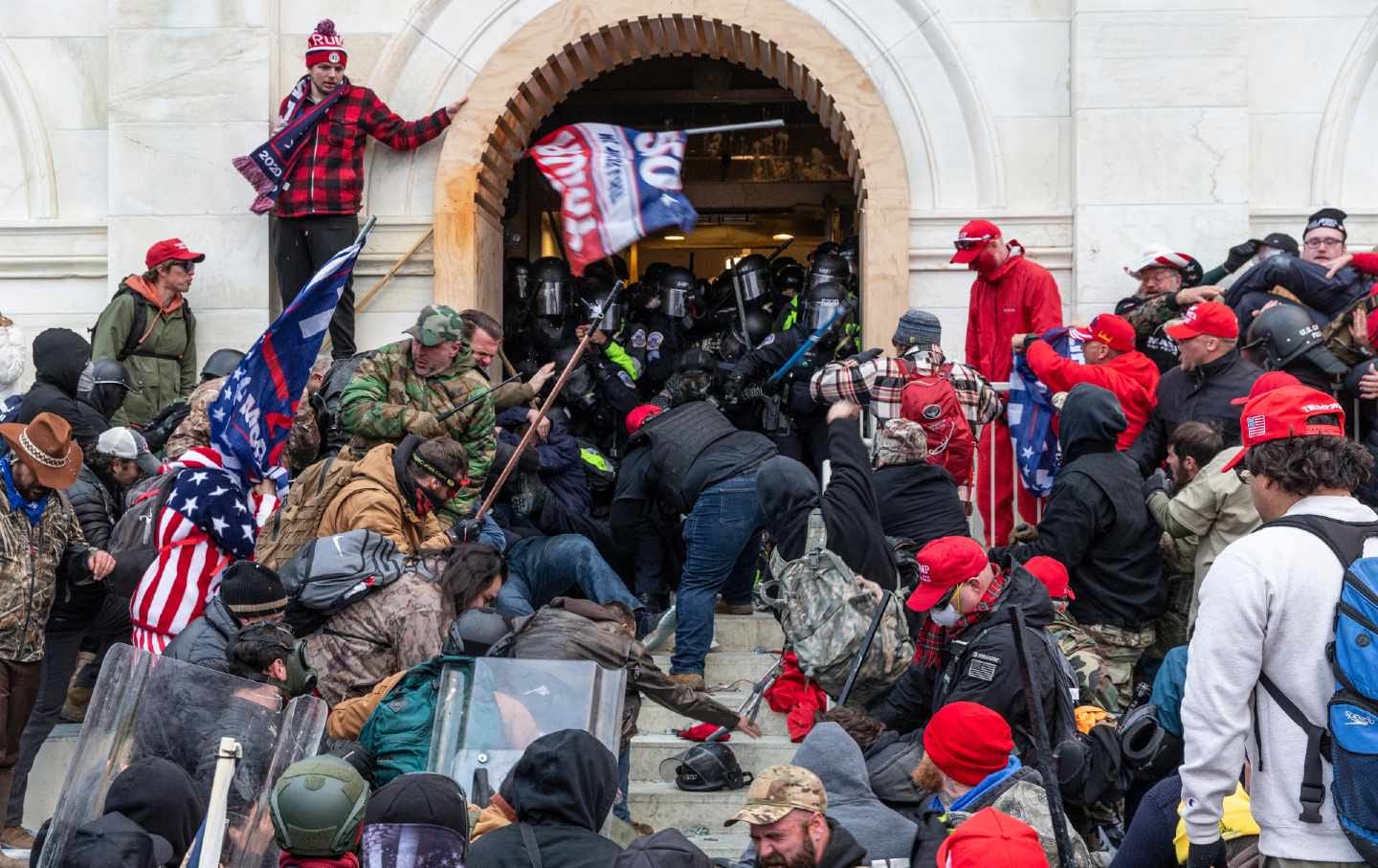
I've often compared Trump to Hitler on my blog, and in the early days I was told it was 'hyperbole'. Today, nobody tells me I'm exaggerating ... I think we can all see the similarities now. Sigh. Good post, Padre ... I learned a lot! Thank you!
We’ve been on the edge of the ‘augenblick’too many times with Trump. He’s been trying to strike that match again and again. As we watch. IWe’ve been flirting with what seemed impossible just six years ago and it’s time to stand up and put him where he belongs: in a van by the river.. .